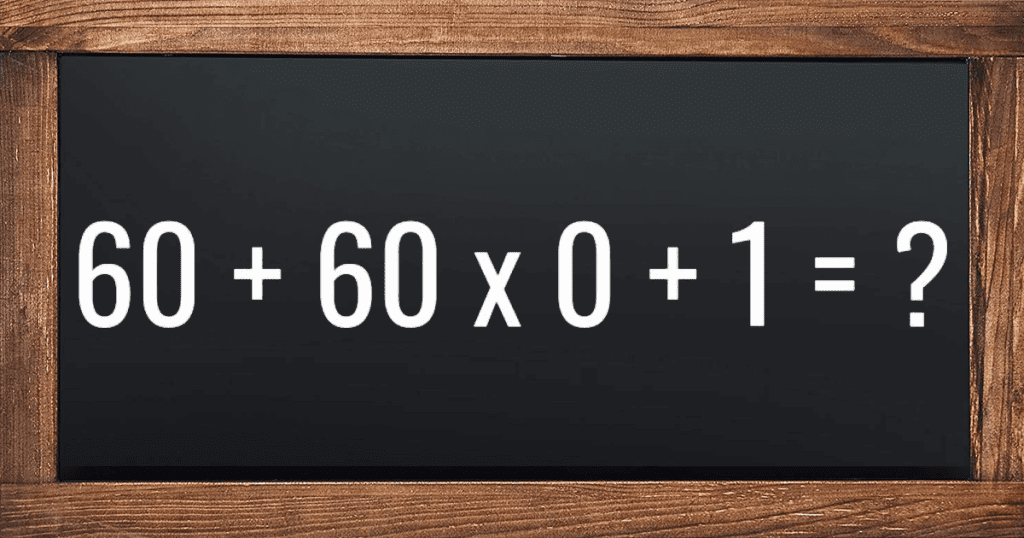Are you ready to test your math skills? This simple-looking math problem has been circulating online, sparking debates, and leaving many people scratching their heads. At first glance, it may seem straightforward, but the way you approach it can make all the difference. Before you scroll down for the answer, try solving it yourself! Can you figure it out?
Common Mistakes When Solving the Math Problem

When people first see the equation, they often rush to answer it without considering the order of operations. Many people mistakenly apply basic arithmetic rules in the wrong order, leading to incorrect answers. If you ask around, you’ll probably hear a variety of answers, with 1, 60, and even 121 being common guesses. Why does this happen?
The main reason is that most people overlook the importance of the order of operations, also known as PEMDAS (or BODMAS in some countries). This acronym stands for:
- Parentheses
- Exponents
- Multiplication
- Division
- Addition
- Subtraction
Many people jump straight into adding, subtracting, or multiplying without considering this order, which is crucial in solving equations correctly. The most common error in this problem is to perform the operations from left to right, without giving priority to multiplication before addition.
Breaking Down the Math Problem: Step-by-Step Solution
Let’s break down the problem, 60 + 60 x 0 + 1, step-by-step and analyze each detail carefully.
Step 1: Remember the Order of Operations
Before you begin solving the equation, always keep in mind PEMDAS. According to this rule, you need to handle multiplication and division before addition and subtraction. Without following this rule, you’re likely to get the wrong answer.
Step 2: Start with the Multiplication
Now, let’s apply the rule to our equation:
60 + 60 x 0 + 1
First, focus on the multiplication:
60 x 0 = 0
After this operation, the equation becomes:
60 + 0 + 1
Step 3: Move to Addition
Now that we’re left with only addition, we simply add the remaining numbers together:
60 + 0 + 1 = 61
That’s it! The correct answer is 61.
Why the Correct Answer is 61

The confusion around this problem often comes from rushing through the calculation or treating the operations as if they should be performed from left to right. But as we’ve seen, applying the order of operations (PEMDAS) ensures that multiplication is performed before addition, leading to the correct result.
Engage With Us: What Was Your Answer?
Now that you’ve seen the step-by-step solution, what was your original answer? Did you get it right, or did you make one of the common mistakes mentioned earlier? Share your answer in the comments below! Let’s see how many people got it correct on the first try.
Conclusion: Keep Testing Your Logic Skills
Math puzzles like this one may seem simple, but they can help sharpen your logical thinking and attention to detail. The more you practice, the better you’ll become at recognizing common pitfalls and applying the correct methods. So, if you enjoyed this problem, keep challenging yourself with more math puzzles to enhance your problem-solving skills.
Now, it’s your turn! Share this puzzle with friends and family, and see who can solve it correctly. And remember, don’t rush – pay attention to those little details that make all the difference. Stay curious, keep learning, and enjoy the process!


